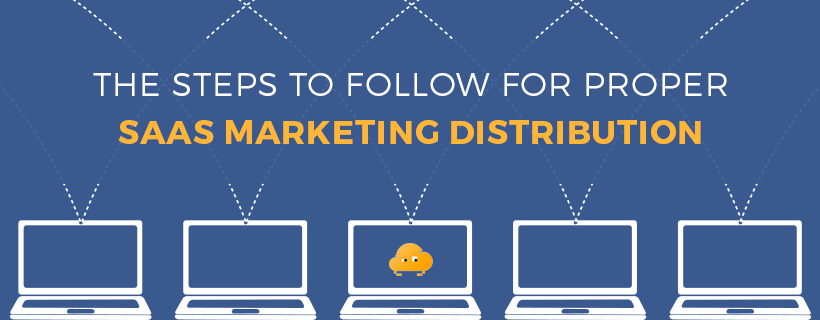It doesn’t matter how great your product is, or how much effort you put into marketing it with excellent content. Proper SaaS marketing content distribution is a non-negotiable component of every successful campaign. If your marketing efforts aren’t in front of the right audience, you might as well be lighting money on fire.
Don’t spend your time curating excellent content only to let it go to waste. These three steps can help your marketing efforts land in front of eager customers.
Know Your Ideal Customer
A business offering trendy bikinis probably wouldn’t find much interest in a rural retirement home. And the Girl Scouts don’t go to diabetes conferences to sell cookies. Knowing your ideal customer is marketing 101, but it’s easy for this goal — and the actions that support it — to be obscured in the hodgepodge that is the Internet.
If you throw a post on a random blog, hope that it generates interest, and never follow up or act upon the customer information you receive, you’re no different from the Girl Scout trying to sell cookies at a diabetes conference.
Put simply: you’re wasting effort and money, and may even be undermining your brand.
If you don’t yet know who or what your ideal customer is, it’s time to get focused. A few questions that can help you accomplish this include:
- For whom is my product most useful? Am I more likely to find an audience among small startups, international conglomerates, or aspiring business owners?
- Who has previously purchased my products?
- What feedback do customers give me? You can learn a lot from customer complaints. You can learn even more from repeat customers. Who keeps coming back for more? They’re probably your target client base.
- When do people most often buy from you, and where? You can learn a lot about your ideal customer by looking at referrals, search engine analytics, and the effectiveness of advertising campaigns.
- Is there a specific time of year during which sales peak? You might have a seasonal product, or you might be accidentally stumbling upon an effective advertising strategy only at certain times of the year.
Offer Quality, Focused Content
Content is only the beginning of a SaaS marketing distribution strategy. For the expense of content to really be worth your while, you need high-quality content that offers value to your target market.
So what does that look like? A few pointers:
- Your content should be professional and polished. Don’t just stuff an assortment of keywords into a few disjointed paragraphs and hope for the best. Low-quality content can actually harm your image, so if you’re not willing to invest in quality content, you might be better off skipping content marketing altogether.
- Your content should cover topics that will be interesting and useful to your readers. This means you must sound authoritative, and if you’re not an authority on the topic at hand, you may need to hire an authority.
- Don’t just try to sell a product. Too often, SaaS businesses grow fixated on highlighting the features of their product or brand. This is akin to expecting a customer to skip a television show in favor of watching commercials. No one wants to read ad copy.
- Cover topics specific to your niche. Customized content can further polish your brand’s image, so consider investing in content targeted to each of your ideal demographics. Consumer feedback and engagement can tell you a lot about how best to customize your content.
- Distribute your content to marketing channels specific to each piece of content. For example, a piece about fashion has little place on a business blog but is an ideal fit for a fashion site.
Utilize Diverse Marketing Channels
Distribution channels fall roughly into three categories:
- Owned distribution channels: These are your distribution channels, including your website, blog, LinkedIn, Twitter, Facebook, and social media pages. These channels tend to attract people who are already interested in your brand, though you can also drive traffic to these channels with clever ads, free products, and compelling content.
- Earned distribution channels: These channels are those you must earn access to with compelling content or an impressive reputation. They include web and print journalism websites, as well as popular blogs that allow you to write guest posts. These channels increase your credibility, and can drive traffic to your owned distribution channels. Earned distribution channels are often the most valuable, since they provide an imprimatur of credibility and authority that you can’t get from paid or owned networks.
- Paid distribution channels: Paid distribution channels include social media ads, sponsored blog posts, and all other forms of paid content marketing. These channels offer great flexibility, since you can tailor your content to a specific market. However, they alone are not sufficient to market your product, since customers are increasingly suspicious of paid outlets.
To maximize your visibility, appeal to more customers, and increase access to new business, you need to provide content across all three channels. Don’t repeat content across channels, or you’re wasting valuable space. Instead, custom tailor content to each channel.
Posts on your owned channels are an ideal opportunity to debut new products, feature promotions, and sponsor contests. Earned distribution channels provide a place to link back to your products and increase your credibility. Paid distribution channels allow you to target customers searching for services similar to yours, but can also be used to market useful content that highlights your product or brand. Make use of all three and watch interest soar.

